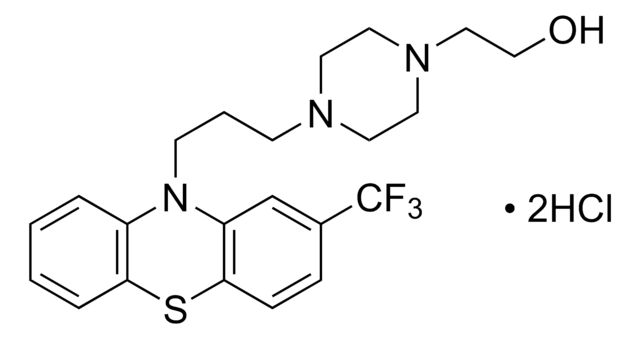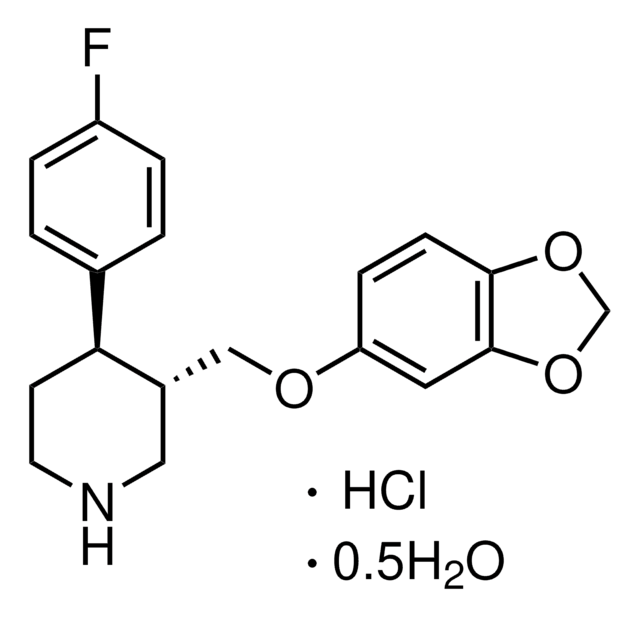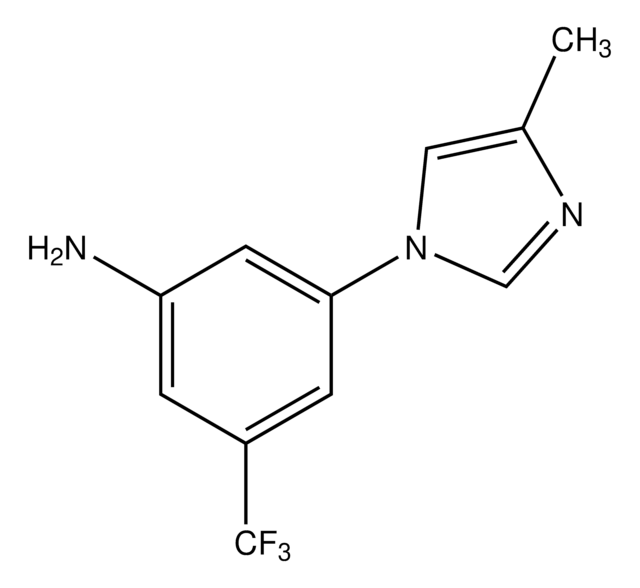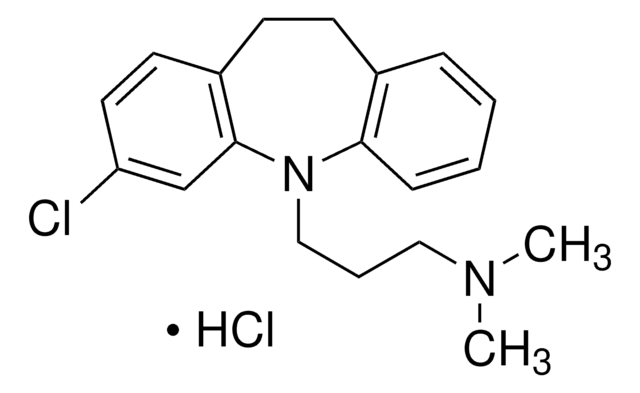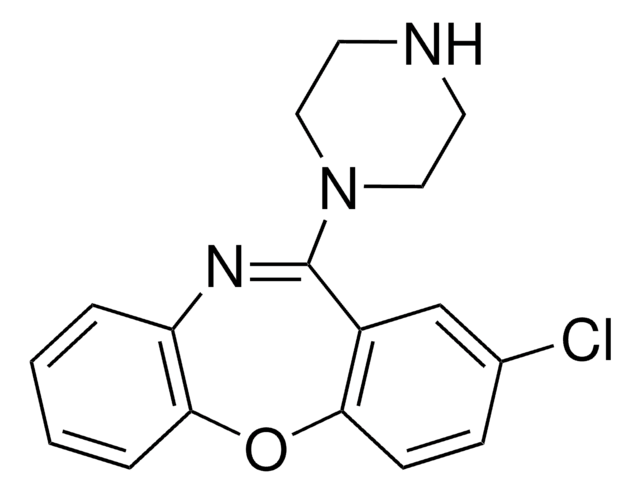1154004
USP
Cyclizine hydrochloride
United States Pharmacopeia (USP) Reference Standard
Synonym(s):
1-Benzhydryl-4-methylpiperazine hydrochloride, Marezine hydrochloride
About This Item
Recommended Products
grade
pharmaceutical primary standard
API family
cyclizine
manufacturer/tradename
USP
application(s)
pharmaceutical (small molecule)
format
neat
storage temp.
2-8°C
InChI
1S/C18H22N2.ClH/c1-19-12-14-20(15-13-19)18(16-8-4-2-5-9-16)17-10-6-3-7-11-17;/h2-11,18H,12-15H2,1H3;1H
InChI key
UKPBEPCQTDRZSE-UHFFFAOYSA-N
Looking for similar products? Visit Product Comparison Guide
General description
Application
- Apoptotic pathways in macrophages: Cyclizine hydrochloride was studied for its ability to induce cytotoxicity and apoptosis in macrophages through both extrinsic and intrinsic pathways, suggesting its potential implications in immunomodulatory therapies (Lu et al., 2024).
- Chemometric methods in impurity analysis: Advanced chemometric methods have been employed to determine cyclizine hydrochloride along with other compounds in pharmaceutical products, highlighting its importance in ensuring the purity and efficacy of drug formulations (Saad et al., 2022).
- Anti-inflammatory effects in pharmacology: Cyclizine derivatives were synthesized and evaluated for anti-inflammatory performance on Wistar rats, providing insights into the therapeutic potential of cyclizine modifications in treating inflammation (Ahmadi et al., 2012).
Analysis Note
Other Notes
related product
Signal Word
Danger
Hazard Statements
Precautionary Statements
Hazard Classifications
Acute Tox. 3 Oral
Storage Class Code
6.1A - Combustible acute toxic Cat. 1 and 2 / very toxic hazardous materials
WGK
WGK 3
Flash Point(F)
Not applicable
Flash Point(C)
Not applicable
Choose from one of the most recent versions:
Certificates of Analysis (COA)
Sorry, we don't have COAs for this product available online at this time.
If you need assistance, please contact Customer Support.
Already Own This Product?
Find documentation for the products that you have recently purchased in the Document Library.
Our team of scientists has experience in all areas of research including Life Science, Material Science, Chemical Synthesis, Chromatography, Analytical and many others.
Contact Technical Service
